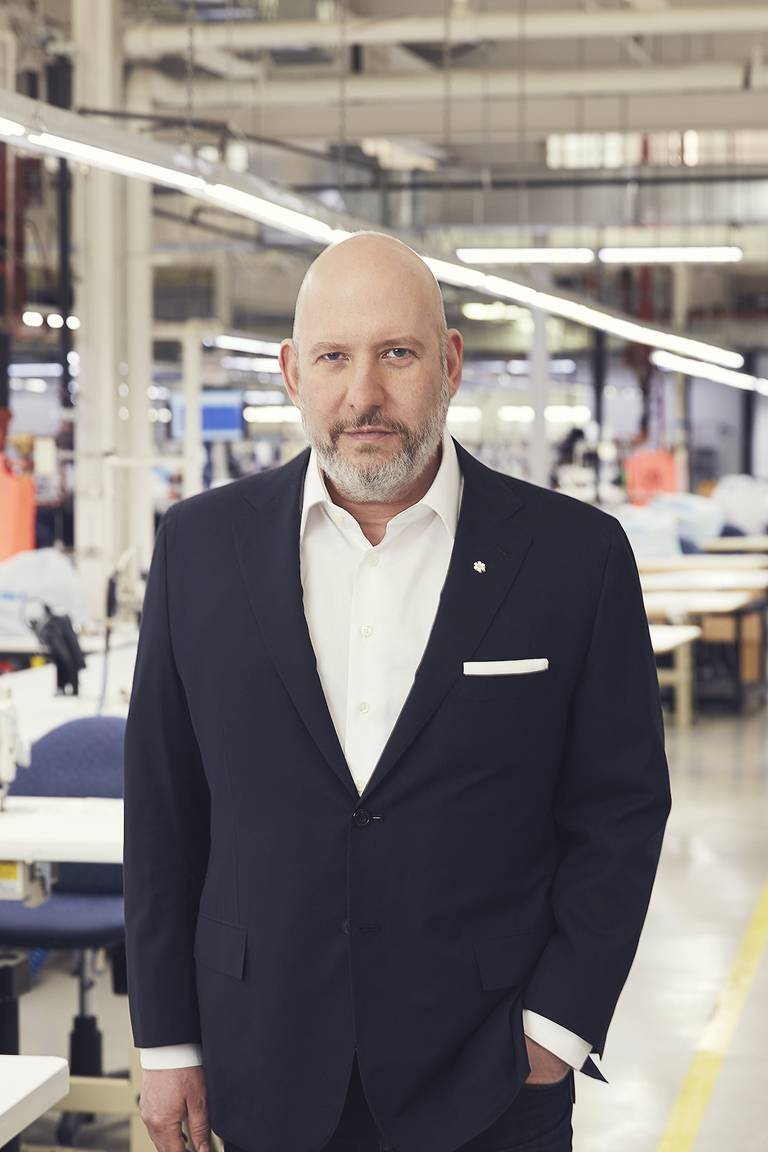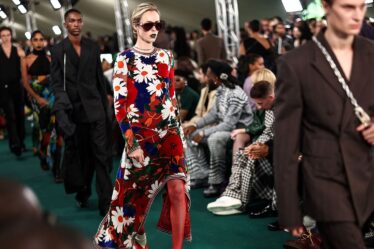
A family-owned business since its inception in 1957, Canada Goose is resolute in its commitment to remaining a “Made in Canada” brand. Its hero parka product — combining both functionality and craft — provided a foundation point from which the brand has evolved beyond outerwear. Today, the brand has expanded its categories beyond outerwear to create a holistic luxury brand, offering lifestyle products, including apparel and, most recently, footwear.
To deliver on its commitment to create product in Canada, both its country of origin and inspiration, the business has eight wholly owned domestic manufacturing facilities, which creates total transparency and visibility over processes as well as agile control over output.
As younger luxury consumers expect greater degrees of transparency on manufacturing processes and the lifecycle of luxury products, the company has made significant investments to ensure its vertically integrated production ecosystem reflects not only sharpening consumer sentiment on conscious manufacturing methods, but its respect for others and the environment.
Commitments include a bid to become carbon zero by 2025, going fur-free, and transitioning 90 percent of its materials to Preferred Fibers and Materials (PFMs) by 2025. In January 2022, Canada Goose signed on to the UN Global Compact, committing to uphold 10 principles covering human rights, environment, labour and anti-corruption.
Humanature, the brand’s purpose platform, also unites its sustainability and values-based initiatives. Embedded across every aspect of the brand’s operations, it is most keenly leveraged in their Environmental, Social and Governance (ESG) strategy and Corporate Social Responsibility (CSR) initiatives. Humanature also includes Canada Goose’s Sustainable Impact Strategy, which sets time-based targets that sit in line with key UN Sustainable Development Goals (SDGs).
BoF sits down with the chairman and CEO of Canada Goose, Dani Reiss — grandson of founder, Samuel Tick — to understand how the brand has evolved outerwear and performance wear into coveted luxury pieces, the progress it has made against its sustainability commitments, and the nuanced evolution of its business into a global luxury brand.
How has Canada Goose remained a ‘Made in Canada’ brand as it has scaled?
Being “Made in Canada” allows us to deliver quality craftsmanship. We have full visibility over production and can guarantee product durability. Our products have a lifetime warranty — something that is unusual in today’s landscape.
It is an active and ongoing decision to manufacture in Canada. Around the year 2000, there was a lot of pressure to resort to offshore manufacturing for lower cost production. For us, the place of production is almost as important as the thing itself — just like a Swiss-made watch.
So, we decided to double down on production here while everyone else was leaving and over time, built eight factories in Canada. We are proud to employ more than 20 percent of the Canadian cut-and-sew industry and have really focused on revitalising this craft in Canada.
We are a third-generation family business. Every generation has had something to contribute, and the story of the last 20 years has been about establishing Canada Goose as a global luxury brand, while remaining true to the processes that define us.
How has Canada Goose approached category expansion beyond its hero products?
Our approach has always been to focus on performance and create best-in-class products. Everything draws reference and evolves from the parka. It is the product that people associate with us. We focused on taking a product known pretty much exclusively by people who live and work in the coldest places on Earth and brought that experience and high-quality product to the greatest urban cities globally.
As we have scaled, traditional craftsmanship and design processes have remained one of our most significant investments.
When it comes to expansion, we are led by the consumer. Over time, we have seen a marked increase in consumer appetite for more products from us across adjacent categories, from knitwear to accessories and, more recently, footwear.
It is about building a true luxury brand, at scale, while remaining wholly independent.
How has Canada Goose upheld traditional craftsmanship as the brand has scaled?
When deciding where to make things, we will always be led by craftsmanship. As we have scaled, traditional craftsmanship and design processes have remained one of our most significant investments. The most important thing is to make the best products in the best place. For instance, hand-making our outerwear in Canada is one of our core competencies and a process we are constantly innovating.
When it comes to new product categories, for example, knitwear and footwear, that we have expanded into, we have looked to other parts of the world to manufacture them based on who is the leader in the space. We have gone to places like Italy and Romania — countries renowned for their craft in these new categories — to build on our philosophy around making products in the best possible place, wherever that may be.
How is Canada Goose exploring the relationship between luxury and performance?
Today, the very concept of luxury is changing. Look at Range Rover — a brand built to withstand the world’s harshest environments, elevated to luxury status. Our evolution is similar. All of our products are built to perform and I think that performance pushed far enough then becomes luxury. If you look at fashion’s adjacent industries, the story is the same.
What constitutes luxury has evolved from purely exclusive and prestigious products into a focus on how products are made and what the brand stands for. Consumers today care about the brand story, they want insight into the production process, and they are looking for a great product that is bigger than the brand itself.
It is also crucial that brands today, with a luxury positioning, are helping to drive global change. Consumers want brands to stand for something — in 20 years’ time, I don’t believe there will be any successful businesses that aren’t standing for something good. Brands can no longer afford to be passive.
How is Canada Goose delivering on commitments made in its Sustainable Impact Strategy?
I am particularly proud of the commitments that we have made as part of our product and overall business strategy. Humanature is the platform we have created to build out specific commitments that relate to our purpose to keep the planet cool and the people on it warm.
We are working to become carbon zero by 2025, and are certified under the Responsible Down Standard (RDS) as a brand and manufacturer, and are committed to sourcing down responsibly.
What constitutes luxury has evolved from purely exclusive and prestigious products into a focus on how products are made and what the brand stands for.
Our transition away from fur has been a significant shift for the business. We made the decision to stop purchasing fur last year and we will have ceased manufacturing entirely by the end of this year. It was a meaningful decision for the business. I believe it is incumbent upon companies to be attentive. Consumers will be purchasing from brands that aren’t just talking about targets, but delivering on commitments. We want to be the leader in this space.
How does Canada Goose view expansion over the medium term?
In terms of expansion, we are continuing to grow our direct-to-consumer business, from new store openings across the globe to optimising our website for a better user experience. We plan to deepen our presence in key markets around the world, including the US, EMEA and APAC.
As we have grown and scaled as a business, we have never tried to be something that we are not. The evolution of Canada Goose has always come back to our authentic heritage, and being authentic is inherently part of being a luxury brand.
There is so much opportunity ahead of us. We have a playbook that is now well-established in terms of building new categories. We only launched footwear a year ago and are already seeing meaningful growth in that space, and as a result, exploring more non-apparel categories. However, no matter the product, our commitment to delivering exceptional quality and protection against the elements is absolutely steadfast.
The world is used to seeing luxury brands come out of traditional footholds like Europe — I’m proud that we are one of the first Canadian luxury brands to break that mould.
This is a sponsored feature paid for by Canada Goose as part of a BoF partnership.



